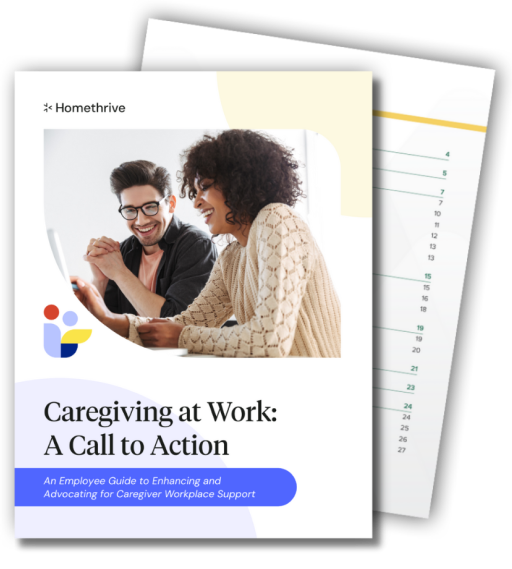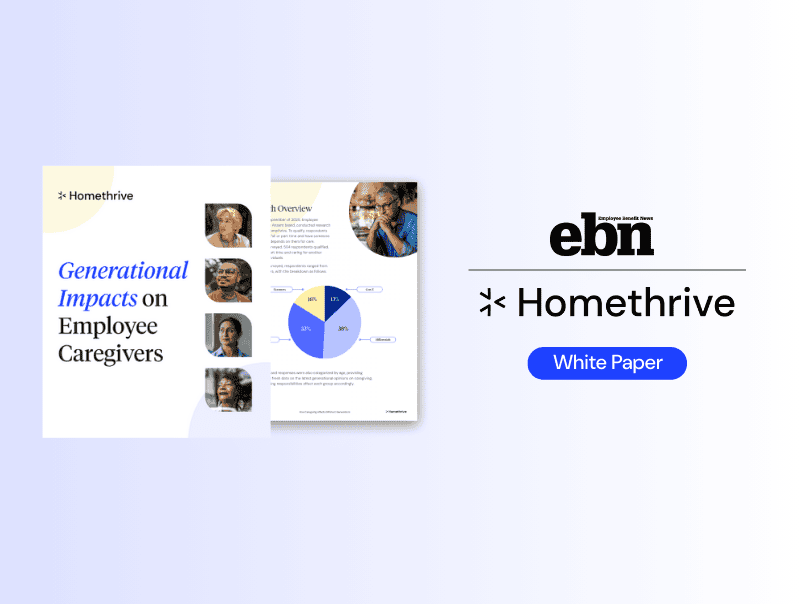For decades, childcare was treated as a personal responsibility—an issue for families, not employers. But the modern workforce has shifted. Today, caregiving is no longer a background concern; it’s a workplace issue directly impacting productivity, retention, absenteeism, and talent acquisition.
In the U.S. alone, childcare-related challenges cost employers an estimated $23 billion annually, according to the Committee for Economic Development. These losses stem from missed workdays, sudden resignations, and diminished productivity when employees are stretched between their job duties and caregiving emergencies.
If flexibility was the buzzword of the pandemic, support is the mandate of the post-pandemic era. Working parents need more than leniency—they need infrastructure. And employers who invest in it are seeing measurable returns.
Childcare Strain Isn’t Just a Family Issue, It’s a Workforce Disruptor
Operations take a hit when a parent misses work because of a childcare breakdown. Projects stall. Deadlines get pushed. Teams scramble to cover shifts or reassign responsibilities. These disruptions, repeated across departments and locations, become systemic.
More than half of working parents report missing work due to childcare breakdowns, according to a ReadyNation study. The same report estimates the annual cost of inadequate childcare at $122 billion, factoring in lost earnings, productivity, and tax revenue.
This isn’t just a burden for parents—it’s an organizational risk. Especially in lean teams or client-facing roles, a single absence can cascade into costly disruptions. And when employees start considering leaving their jobs entirely to handle caregiving full-time, the business cost rises exponentially.
According to SHRM, replacing an employee can cost anywhere from 50% to 200% of their salary, depending on their level. Multiply that across several positions, and the ROI of supporting caregivers becomes glaringly apparent.
The Pandemic and the Accelerated Care Crisis
While childcare was always a source of friction for working parents, the COVID-19 pandemic turned that friction into a full-blown crisis. Overnight, schools and daycare centers shut down. Parents suddenly had to fill the gap while managing full-time workloads.
A McKinsey & Company report found that 1 in 3 mothers considered leaving their jobs or downshifting their careers due to caregiving pressures. In dual-income households, it was often mothers who stepped back, creating a massive regression in workforce gender equity.
Even as the acute phase of the pandemic ended, the system didn’t bounce back. Many daycare providers closed permanently, exacerbating what were already widespread “childcare deserts”—areas where there aren’t enough licensed providers to meet demand.
In this new reality, the need for employer-driven solutions is urgent. Parents can’t solve this on their own. They need employers to be part of the support system, not an additional stressor.
Childcare as a DEI Imperative
Diversity, equity, and inclusion (DEI) efforts often focus on hiring and training. However, true equity requires structural support, especially for groups disproportionately affected by caregiving demands.
The caregiving burden still falls disproportionately on women. According to SHRM, women are three times more likely than men to leave their jobs for caregiving reasons. This creates a compounded effect: fewer women in leadership pipelines, slower progression into executive roles, and less representation at the top.
Offering meaningful childcare support isn’t just generous—it’s strategic. It enables mothers to stay in the workforce and pursue advancement on an equal playing field. It also supports other underrepresented groups who may lack access to reliable external care, including single parents, LGBTQIA+ families, and multigenerational households.
When embedded into benefits design, childcare support becomes a lever for equity, not just a perk. It enables diverse talent to stay, grow, and lead.
Employees are Making Career Decisions Around Family Support
Today’s workers aren’t just evaluating salary and PTO—they’re asking whether an employer will respect and support their life outside of work. This shift is especially strong among Millennials and Gen Z, who now comprise most of the workforce.
According to Homethrive’s Financial State of Family Caregivers Survey, 75% of working caregivers said they would consider changing jobs for better family care benefits.
This creates a powerful incentive for employers: offer childcare support, and you’ll attract and retain stronger, more loyal talent. Miss the mark, and you’ll lose out—not just in recruitment, but in long-term employee engagement and brand perception.
Flexibility Isn’t Enough Without Reliable Care
Remote work, flexible scheduling, and compressed weeks have been touted as solutions for working parents. And while they’re valuable tools, they’re not substitutes for childcare.
Trying to lead a meeting while managing a toddler is not balanced—it’s burnout. Parents may appreciate flexibility, but they still need dedicated, trustworthy care to fully focus on their work. Without that, productivity suffers, and mental health deteriorates.
Working families need a backup care infrastructure: solutions that provide same-day or next-day support when regular arrangements fall through. This is the kind of scaffolding that keeps employees engaged and present, both physically and mentally.
What Real Support Looks Like: Homethrive’s Childcare Benefits
Enter Homethrive: a solution that recognizes the complexity of modern caregiving and meets employees where they are. Homethrive’s backup childcare capabilities allow employees to book vetted, background-checked caregivers with same-day or next-day availability across the U.S., 24/7.
Rather than requiring upfront subsidies or monthly minimums, Homethrive operates on a pay-per-use model. Employers only pay when their employees use the service, which means no wasted budget and maximum flexibility.
Key features include:
- Real-time availability with trusted providers
- Verified ratings and repeat-family data
- Support for children with special needs or neurodivergence
- Inclusive care for non-traditional families and irregular work schedules
For employees, this means confidence. For employers, it means measurable ROI.
ROI that Goes Beyond the Balance Sheet
Investing in childcare benefits doesn’t just reduce turnover—it enhances productivity, builds trust, and creates loyalty.
When working parents know they can rely on their employer for last-minute care, they’re less likely to take unplanned leave, more likely to stay long term, and more likely to advocate for their workplace. According to a Willis Towers Watson survey, companies that offer caregiving benefits experience lower absenteeism and stronger retention across all age groups.
Homethrive’s usage-based model provides 2x more utilization than traditional benefit platforms, making every dollar count. Employers aren’t paying for access—they’re paying for impact.
And that impact is visible not just in spreadsheets, but in employee feedback, engagement survey scores, and reduced turnover across departments.
A Tool for Employer Brand Differentiation
In a tight labor market, benefits can make or break a candidate’s decision. But flashy perks like snack bars and ping pong tables don’t carry the same weight as support that solves real problems.
Offering childcare benefits—particularly flexible, inclusive, and easily accessible care—signals that your company understands the realities of working life. It builds credibility with prospective and current employees, strengthening your employer brand in a crowded field.
It also creates word-of-mouth value. Parents talk. When a workplace steps up for them, they share that experience within their professional networks and social platforms. That kind of brand advocacy is challenging to buy, but easy to earn with the right support systems.
How to Implement Childcare Benefits that Work
A childcare benefit is only as valuable as its adoption. Here’s how successful organizations roll it out:
Prioritize communication
Don’t hide the benefit in a handbook. Include it in onboarding, promote it in company-wide meetings, and build awareness with targeted internal campaigns.
Train managers
Frontline managers are the link between policy and practice. Ensure they understand how the benefit works, when to recommend it, and how to support team members using it without guilt or stigma.
Normalize usage
Encourage leadership to talk about the benefits openly. When executives and directors use and endorse childcare support, it sets the tone for the entire company.
Track outcomes
Monitor usage, satisfaction, absenteeism rates, and retention metrics. This data helps quantify ROI and allows for continual improvement.
When childcare benefits are rolled out with intentionality and visibility, they don’t just sit unused—they drive transformation.
From Compliance to Culture: A Mindset Shift
The companies that see the highest ROI from childcare benefits are those that don’t treat them as one-off solutions. They treat them as part of a broader culture of empathy, flexibility, and high performance.
It’s not just about offering care on paper—it’s about embedding support into your leadership philosophy and creating psychological safety for caregivers. Aligning benefits with real employee needs. It’s about recognizing that employees perform best when they cannot choose between their families and jobs.
This is the shift from policy to culture—and it’s where the magic happens.
Why Now is the Time
The demand for childcare benefits isn’t new, but the expectation for them is. Employees are no longer just hoping for support. They’re actively seeking it out. And if they don’t find it with you, they’ll find it elsewhere.
Organizations that recognize and act on this will reap the benefits in talent retention, engagement, and performance. Those that don’t will continue to lose high-value employees for reasons entirely preventable.
By partnering with Homethrive, you can help employees reclaim valuable time and energy to focus on their work, families, and personal well-being.
Show your team they don’t have to choose between their careers and caregiving responsibilities. Contact us today to explore how Homethrive can enhance your employees’ well-being and productivity.







